The Dam Removal Decision: Why Removing An Unneeded Dam May Be Worth The Hassle
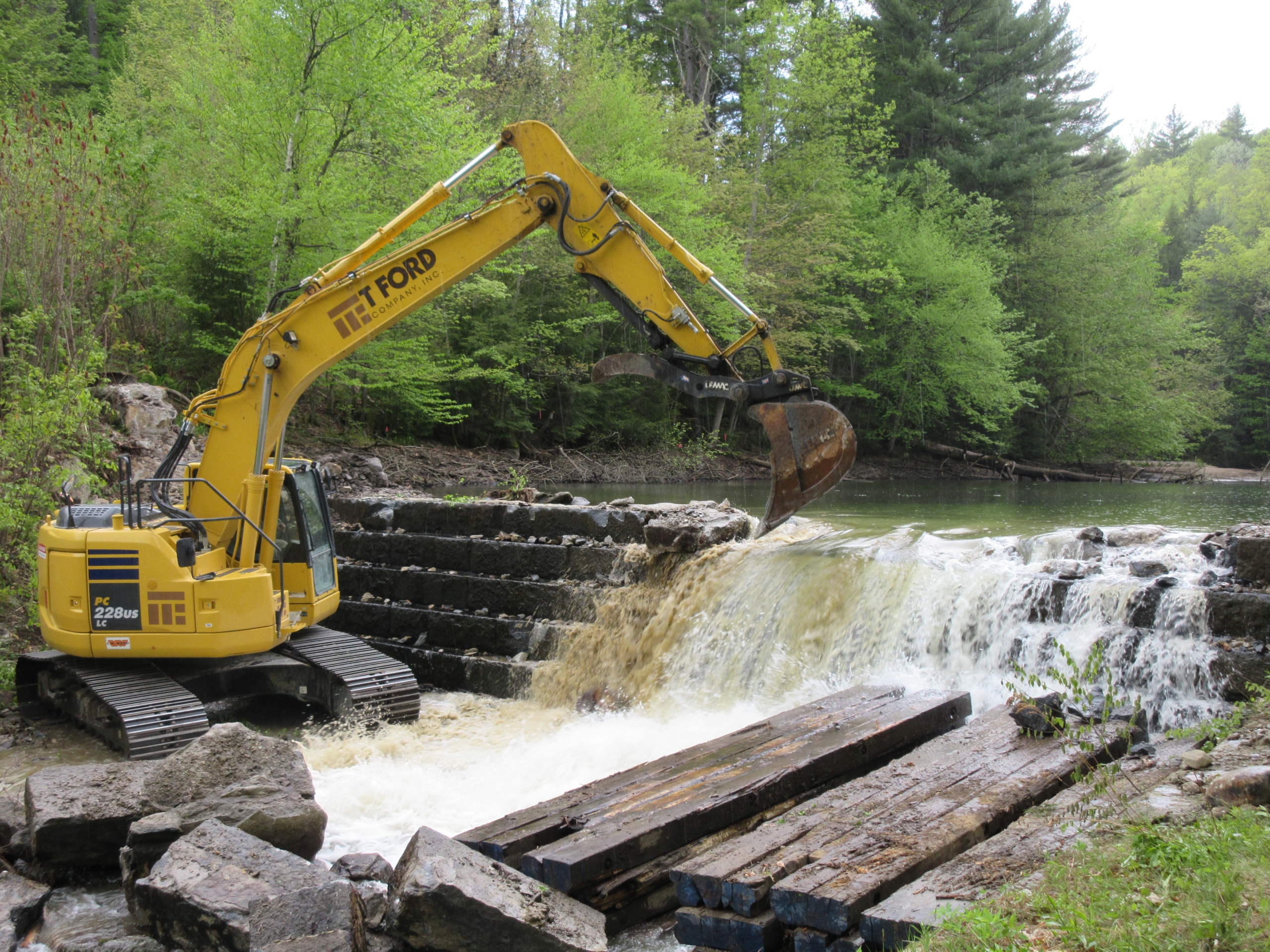
By Daniel R. Buttrick, PE
There are thousands of dams across the landscape of the Northeast. Many are decades old, and many have lost their original function. A dam built for public water supply or industrial power may now provide only light recreation, or simply a scenic view. And yet, the dam remains, being inspected by their owner, being repaired and maintained, still posing a risk to areas downstream, and still segmenting the riverine ecosystem.
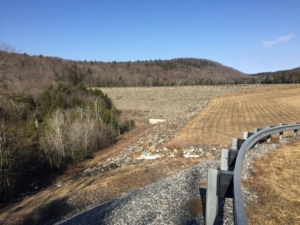
An example of a large flood control dam that would not be a good removal candidate.
Meanwhile, the dam is aging. The process can be very slow, with a small issue that has ‘always been there’ worsening over the years. Other issues add to it. Eventually, an adverse inspection finding leads to a dam safety order, and then the owner must decide whether to rehabilitate the dam or remove it.
Rehabilitation can be an easy choice if the dam’s original function remains. Maybe the dam is still used for water supply, or has a public flood control purpose, or is relied upon for hydroelectric power, or drives the local or regional economy.
In other cases, the apparent answer may not be the best answer. Unneeded dams, such as old, inactive, or abandoned water supply reservoirs, for example, or municipally owned ponds with old dams acquired long ago can be scenic places. They can provide other societal benefits, such as a fishing hole, or a source of fire-fighting water. They can benefit infrastructure, reducing scour at bridges or pipelines below the stream bed. These factors may seem to be significant concerns that favor rehabilitation. However, this weighting may be overvalued. Aesthetics are subjective, and a healthy riverine and wetland ecosystem complex that could result from a dam removal may provide habitat for a larger variety of plants and animals, in addition to the riverine connectivity and fisheries benefits. Fire-fighting water sources can be provided in a number or ways, and there are better ways to protect infrastructure than to maintain unneeded dams. In many cases, opting to keep a dam in favor of these marginal benefits may not be worth it.
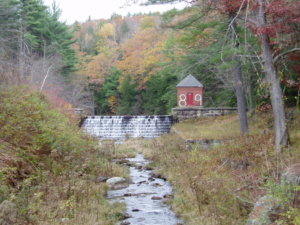
An example of an abandoned water supply dam that is aesthetically pleasing but options would still be weighed about the expense of upkeep.
However, when viewed in the context of project complexity, rehabilitation can also seem like a no-brainer. The scale of the impacts of a rehabilitation project on the landscape is relatively limited and temporary in nature. In contrast, a dam removal project can seem like a daunting undertaking. The effects of the work on the landscape are significant, going to and beyond the upstream limit of the impoundment, and some distance downstream as well, depending on how sediment will be managed (significant sediment is often accumulated upstream of dams, and it is sometimes contaminated. Identifying the means for managing this sediment is an important part of dam removal).
These impacts are, most often, and for the most part, overwhelmingly positive. In fact, they atone for the significantly large negative impacts that occurred at the time of the dam’s original construction, far removed in time and place from the upcoming project. However, much as the landscape was significantly impacted by the original construction of the dam since people and ecosystems have adapted to the dam, removal of the dam will also have consequences. Just because a project may be positive does not mean that the homework involved isn’t daunting.
When tabulating and comparing the complexity of project evaluation, design, and permitting complexity for a dam rehabilitation to that for a removal, rehabilitation can appear to be the winner. The table below presents typical comparative complexity between the two for a number of common topics (note that there are always exceptions).
| Item | Removal Challenges | Repair Challenges |
|---|---|---|
| Sediment Characterization (quantity, pollutants) | More extensive – impoundment, upstream, and downstream | Less – work area only, if any |
| Hydrology Hydraulics/Flooding | More – perception that dams provide flood control need to be overcome | Less – looking at a few, more prescriptive storms; limited area of analysis |
| Geotechnical Evaluation | Less – geotechnical evaluation often not needed | More – geotechnical evaluation needed for most designs |
| Water supply impacts | More – potential permanent impacts to third parties (public and private wells, direct withdrawals) | Less – impacts likely only during construction, if any |
| Infrastructure impacts | More – bridges, buildings, other dams, utility crossings upstream and downstream | Less – temporary, construction-period impacts |
| Property Issues | More – need construction access, assess what rights others have to the impoundment | Less – impacts limited to immediate work area |
| Stakeholder Coordination | More – permanent changes are concerning to many | Less – temporary impacts can be easier to stomach |
| Design | Less – often, less permanent construction is involved. Emphasis is on access, phasing, demolition | More – significant structural and civil design work involved |
| Permitting – local | More – challenging to gain approval from local officials if they are new to dam removal | Less – people like their dams and support their repair |
| Permitting – state federal | Similar complexity to repair – state and federal agencies are seeing the benefits of dam removal | Similar complexity to removal; and removal must also be considered as part of an alternatives analysis |
When viewed in this manner, certainly planning a rehabilitation project comes with its challenges, primarily related to design, but the challenges are smaller in scope and more predictable. In light of the consideration of the perceived benefits provided by the dam, and the relatively greater challenges to be faced in removing the dam, rehabilitation looks like the more appealing choice.
However, there is much more to a project than planning. Once the time for construction arrives, much of the hard work for a dam removal project is complete; construction of a removal project can be simple, faster, and usually less costly. The table below provides a comparison between the complexity of different elements of construction.
| Item | Removal Challenges | Repair Challenges |
|---|---|---|
| Water control | Usually less (1) – phased cofferdams, or sometimes no water control, can be enough | More – complex water control, pumps, and bypass pipes usually needed for extended periods |
| Cast-in-place concrete | Less, or often none | More – most dams involve significant, time consuming, and costly concrete work |
| Access and staging | Less – fewer materials are needed, and for shorter periods of time | More – significant space is needed for materials and access |
| Project duration | Less – both removal and rehabilitation involve demolition… | More - … but rehabilitation involves installation of significant new work |
| Temporary construction mitigation | Less – duration is likely shorter and impacts likely smaller | More – greater and longer impacts |
| Sensitivity to economic price shocks | Less – fewer materials, and those materials that are needed can sometimes be sourced locally | More – requires concrete, steel, and more fuel |
| Permanent construction mitigation | More – if significant uses are lost, mitigation can be costly (although probably still less than the rehabilitation construction cost) | Less – mitigation is mostly temporary. |
Finally, once construction is completed, dam removal is usually the clear winner. Even if post-removal environmental monitoring is required, the duration is usually limited. However, a dam is a significant piece of infrastructure that poses public safety risks. It must be maintained and inspected forever. The following tasks are a sampling of those needed to maintain a good level of upkeep and regulatory compliance for a dam in the long term:
-
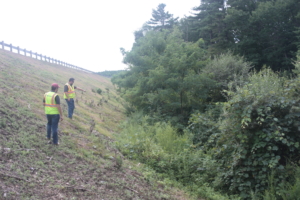
Staff conducts a routine walk-through to assess conditions.
Regular walk-through inspections by staff
- Periodic formal inspections by an engineer
- Track water levels
- Watch for floods
- Train personnel
- Perform periodic maintenance
- Clear spillway
- Maintain vegetation
- Fill low areas and burrows
- Regrade slope protection
- Exercise valves and gates
- Replace concrete joint sealant
- Prepare for emergencies
- Develop Emergency Action Plans (if High or Significant hazard dams)
- Update plans
- Perform periodic training for local officials
- Exercise the plan
In contrast, the following long-term maintenance is required for most dam removal projects:
- Nothing
- Nada
- Zero
- Zilch
- Nil
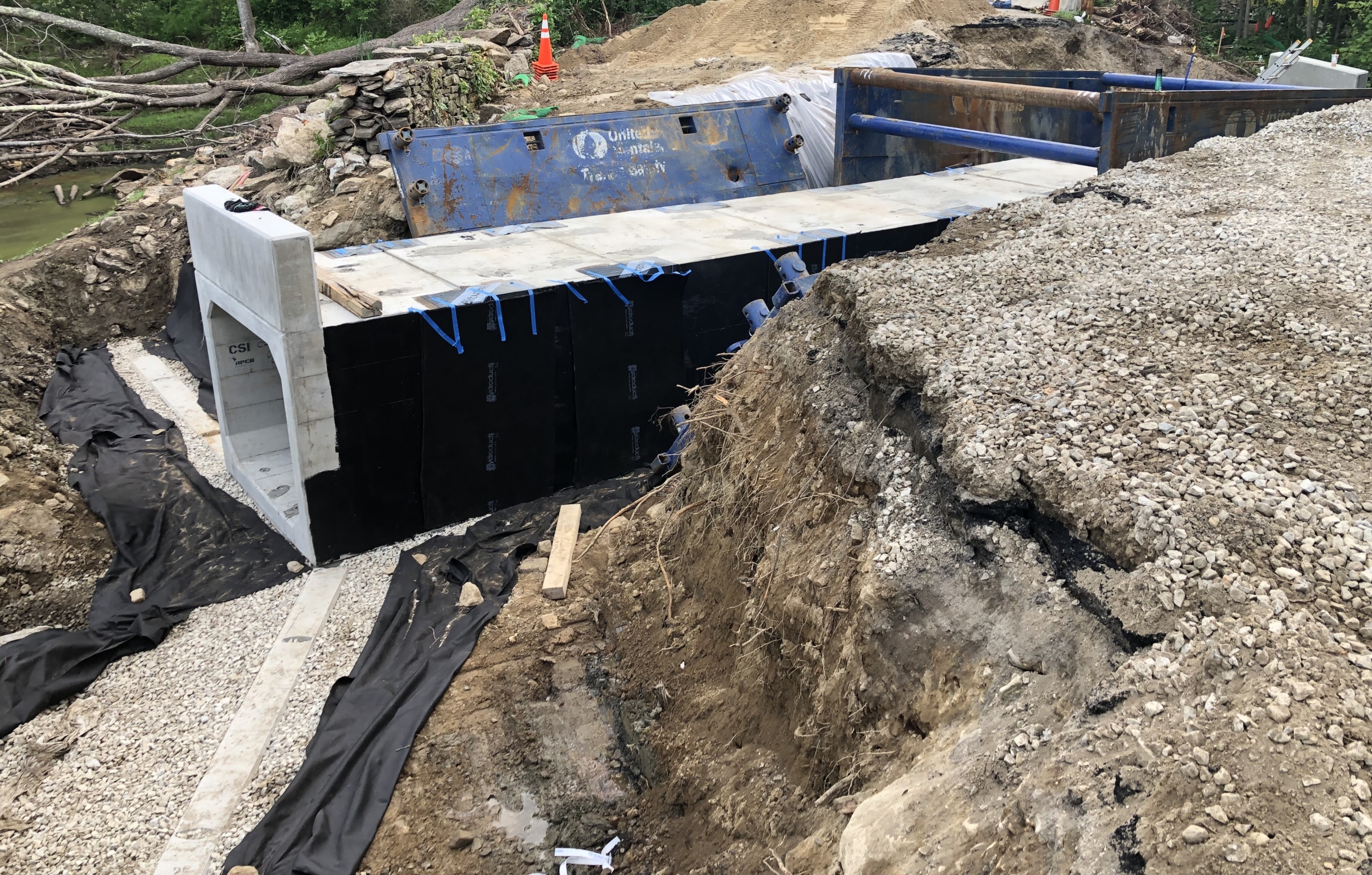
Dam out, culvert in. Still less costly than rehabilitation, both short term, and long term.
In some cases, mitigation measures, or less significant infrastructure is required in place of the dam. Even if the dam had a road on the crest, and a culvert, or even a bridge, is installed in place of the dam, the needed maintenance is much, much simpler.
The bottom line is yes, dam removal can be difficult. However, in the long run, the savings can pay dividends. A rehabilitated dam is still a dam, whereas removing a dam removes your problem for good.


